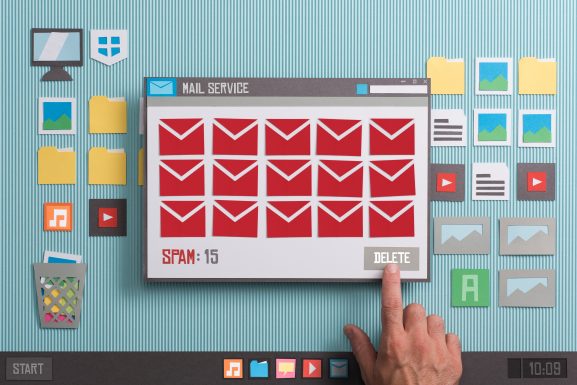A Customer Relationship Management (CRM) system is one of the most valuable tools a business can implement. But simply owning one is not enough. Many organizations invest in CRM software with high expectations, only to find it underutilized or mismanaged. The issue often lies not with the CRM itself, but in how it is used. For a CRM to deliver its full potential, businesses must commit to following CRM best practices and ensure effective CRM usage across all departments.
In this expanded guide, we will explore how businesses can unlock the true power of their CRM systems by addressing key aspects like implementation, training, customization, and optimization.
Understanding CRM: A Foundation for Growth
A CRM system is much more than a digital contact list. It’s a powerful hub that brings together customer data, team collaboration, and analytics to help businesses make informed decisions and build stronger relationships. However, without proper usage, a CRM can quickly become a source of frustration rather than a solution.
Why Misuse Happens:
- Lack of Understanding: Teams may not fully grasp the system's potential or functionality.
- Incomplete Implementation: Features remain unconfigured or unused.
- Resistance to Change: Employees may prefer their old workflows.
To avoid these pitfalls, businesses must prioritize understanding how a CRM fits into their goals and operations.
1. Establish Clear Objectives
The first step in ensuring effective CRM usage is to define what you want the system to achieve. Without clear objectives, it’s easy for teams to lose focus and underutilize the CRM.
Steps to Set Goals:
The very first step that you need to take is identifying key business needs. Without understanding the key requirements of your business, you can’t get the most out of your CRM. It’s essential to determine what your primary focus is for the platform. You can prioritize things like increasing the total sales, improving customer retention, or streamlining the sales process.
After you identify the primary goal for your CRM, you can move on to the next step in the process which is setting measurable KPIs. These KPIs should be directly linked to the primary objective that you’re looking to achieve. For example, if you want to increase the total sales, then one of the KPIs you should set is measuring the lead conversion rates.
Lastly, it’s equally important to effectively communicate the goals you set so that everyone that’ll be using the CRM understands how it’ll support in achieving your objectives.
Examples of Objectives:
- For Sales: Track prospects more effectively and close deals faster.
- For Marketing: Personalize campaigns based on detailed customer insights.
- For Customer Support: Reduce response times and enhance satisfaction scores.
Clear goals ensure that every user approaches the CRM with a purpose, maximizing its potential.
2. Prioritize Comprehensive Training
Even the most advanced CRM system will fail if users don’t know how to use it. Comprehensive training is essential for empowering teams and driving adoption, it’s among the most important CRM best practices.
Why Training Matters:
One of the most common reasons why businesses fail to utilize CRM’s properly is by not prioritizing training. Effective training will significantly help increase confidence in the CRM platform. Users who’ll understand the system are more likely to embrace the new software.
Another benefit of training will be an overall reduction in errors. Proper training will help ensure that your employees make less mistakes in data entry and process execution. Individuals that are untrained are more prone to making potential mistakes.
Additionally, a focus on training will help you get a faster return on your investment. Skilled users will significantly increase the speed at which your CRM will start delivering results. It’ll also serve as a snowball effect, encouraging other users to engage in the training process.
Best Practices for Training:
- Role-Based Training: Tailor sessions to specific roles, such as sales, marketing, or customer support.
- Use Interactive Methods: Provide hands-on training using real data and scenarios.
- Offer Ongoing Support: Regular refresher courses and access to resources help teams stay updated.
Remember, training isn’t a one-time activity. Continuous learning ensures that teams stay proficient as new features or updates are introduced.
3. Focus on Data Quality
One of the most critical CRM best practices is ensuring clean, reliable data. Poor data quality can lead to incorrect insights, misguided strategies, and frustrated users.
Common Data Issues:
One of the most common data issues that people encounter is duplicate records. A duplicated record will clutter the overall database and make finding the datapoints you need more challenging.
Another common issue is that the data isn’t updated regularly. When the data isn’t updated regularly it’ll potentially contain outdated or inaccurate customer information. That can lead to potential issues in your platform.
Lastly, another major issue is dealing with inconsistent data entry formats. Inconsistencies in data entry formats can lead to issues when you’re looking to segment the data properly. It can often lead to important data points being missed completely and causing issues.
CRM Best Practices for Data Management:
- Standardize Data Entry: Define clear protocols for how information should be entered, such as using consistent abbreviations or formatting.
- Implement Validation Rules: Use built-in tools to prevent incomplete or incorrect entries.
- Regular Audits: Schedule periodic reviews to clean up the database, removing duplicates and outdated records.
High-quality data is the foundation of effective CRM usage, enabling better analytics, communication, and decision-making.
4. Customize the System for Your Needs
Off-the-shelf CRM systems are rarely a perfect fit for any organization. Customization allows businesses to adapt the system to their unique workflows and requirements.
Areas for Customization:
An essential CRM best practice is customizing the software to fit your business’s unique requirements. There are a few areas where these automations apply. One of the main areas is fields and modules. Adding custom fields and modules to track industry-specific information.
Another important area that you can customize is the dashboard. You can get custom dashboards designed that display relevant KPI’s for each specific team that’s using the CRM. This will help ensure that the most relevant information is immediately accessible.
Lastly, you can customize workflows according to your business’s requirements. These customizations can include automation rules that’ll allow your CRM to handle repetitive tasks like lead assignment or client follow-ups.
Benefits of Customization:
- Simplifies user experience by eliminating unnecessary features.
- Aligns the CRM with your business processes, increasing efficiency.
- Improves adoption rates as the system feels tailored to your team’s needs.
Investing time in customization ensures that your CRM becomes an integral part of daily operations rather than a generic tool.
5. Integrate Your CRM with Other Tools
For truly effective CRM usage, integration is essential. Connecting your CRM with other business tools creates a unified ecosystem that enhances productivity and data accuracy.
Key Integrations to Consider:
To get the most out of your CRM, it’s important that you’re aware of the most essential integrations. The most common integration that companies engage in is integrating their email platforms with their CRM. Integrating with the email platform will allow you to sync email conversations and automate any potential follow-ups.
Another key integration is focused around marketing automation. You can connect tools like Mailchimp or HubSpot to streamline all your marketing campaigns. It’ll make it much easier for your marketing team to execute your future campaigns from the CRM itself.
Lastly, if your business is using any ERP systems, you can integrate them with the CRM to connect sales and inventory management. These integrations will allow your CRM to become a full-fledged platform that the entire team can leverage.
Benefits of Integration:
- Eliminates data silos by consolidating information from multiple sources.
- Reduces manual work by automating data transfers between systems.
- Enhances collaboration across departments.
Integrations enable your CRM to function as the central hub for all business activities, increasing its overall value.
6. Automate Repetitive Tasks
Automation is one of the greatest strengths of modern CRMs. By automating routine processes, businesses can save time and reduce errors.
Examples of Automation:
If not properly set up, not many people can benefit from this particular CRM best practice. It’s essential to know what you can automate in the platform, so you can set them up properly. Let’s go through some of the most common and essential CRM automations businesses use.
One of the main automations that organizations perform is lead scoring. Lead scoring automation works by setting up a criteria on the basis of engagement or demographics. The CRM will then automatically rank the leads on the basis of this criteria.
Another aspect you can automate is setting up follow-up reminders. Users can send alerts to sales reps when it’s time to contact a prospect again. These reminders make it much easier to follow up and not miss any clients.
Lastly, another area where you can use automations is campaign tracking. The CRM platform will monitor the performance of the campaign in real time.
Why It Matters:
Automation not only improves efficiency but also ensures that important tasks are completed consistently. This is a cornerstone of CRM best practices for productivity and operational success.
7. Leverage Analytics and Reporting
CRMs generate vast amounts of data, but that data is only valuable if it’s analyzed effectively. Analytics and reporting tools provide actionable insights that drive better decisions.
What to Track:
To understand how you can leverage CRMs for analytics and reporting, it’s important to first know what you can track. That way you’ll be able to analyze the most important datapoints effectively.
One of the most common aspects you can monitor is sales metrics. These include the pipeline health, conversion rates, and any potential revenue trends. Your sales team will greatly benefit from receiving reports on all these metrics.
Additionally, another important metric to track is the customer insights. Customer insights include understanding the buying patterns, consumer preferences, and the overall lifetime value.
Another aspect is tracking overall team performance. The CRM can track employee productivity and even identify potential areas for improvement. These insights will allow senior management to
- Sales Metrics: Monitor pipeline health, conversion rates, and revenue trends.
- Customer Insights: Understand buying patterns, preferences, and lifetime value.
- Team Performance: Evaluate productivity and identify areas for improvement.
How to Use Insights:
- Identify bottlenecks in the sales process.
- Optimize marketing campaigns based on engagement metrics.
- Adjust customer service strategies to improve satisfaction.
Regularly reviewing analytics ensures effective CRM usage by turning data into action.
8. Encourage Cross-Departmental Collaboration
A CRM isn’t just for one team—it’s a resource for the entire organization. When used collaboratively, it can break down silos and foster better communication.
Best Practices for Collaboration:
- Unified Records: Ensure all teams can access up-to-date customer information.
- Shared Dashboards: Create dashboards that display metrics relevant to multiple departments.
- Integrated Workflows: Align processes like lead handoffs or campaign execution across teams.
Collaboration transforms the CRM into a tool for holistic growth rather than isolated success.
9. Continuously Optimize Your CRM
To keep your CRM delivering results, it’s crucial to treat it as a living system that evolves with your business.
How to Optimize:
- Monitor Usage: Identify which features are underutilized and why.
- Collect Feedback: Regularly ask users for input on what’s working and what isn’t.
- Adopt Updates: Take advantage of new features and improvements from your CRM provider.
Continuous optimization ensures that your CRM adapts to changing needs and continues to provide value over time.
10. Align CRM with Business Goals
Finally, your CRM strategy must align with your broader business objectives. Whether it’s improving customer retention, driving revenue, or enhancing operational efficiency, the CRM should support these goals.
Steps for Alignment:
- Set KPIs that reflect your strategic priorities.
- Regularly assess CRM performance against these metrics.
- Adjust workflows and processes based on outcomes.
Alignment ensures that your CRM becomes a key driver of business success rather than just a supporting tool.
Conclusion: Maximizing the Value of Your CRM
A CRM is more than software—it’s a strategic asset. However, its value depends entirely on how you use it. By following CRM best practices and prioritizing effective CRM usage, businesses can unlock the full potential of their systems.
From setting clear goals and maintaining data quality to leveraging automation and fostering collaboration, every step contributes to a more productive and impactful CRM experience.
Remember, it’s not just about having a CRM—it’s about using it right. With the right strategies, your CRM can transform the way you do business and help you achieve lasting success.



